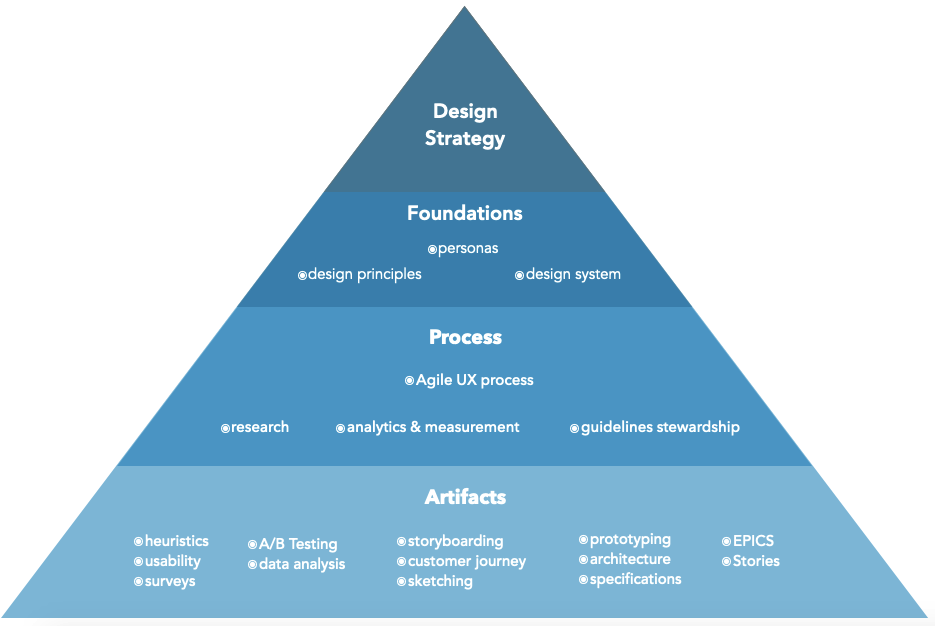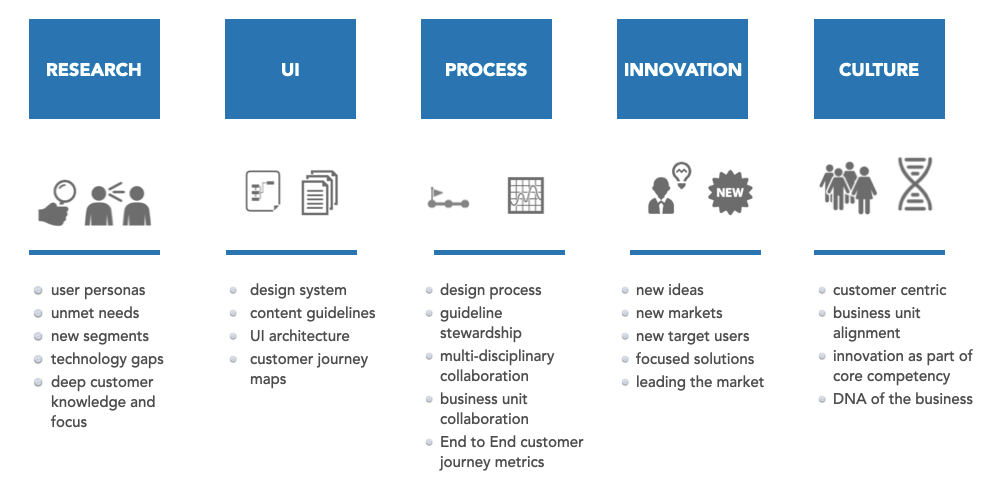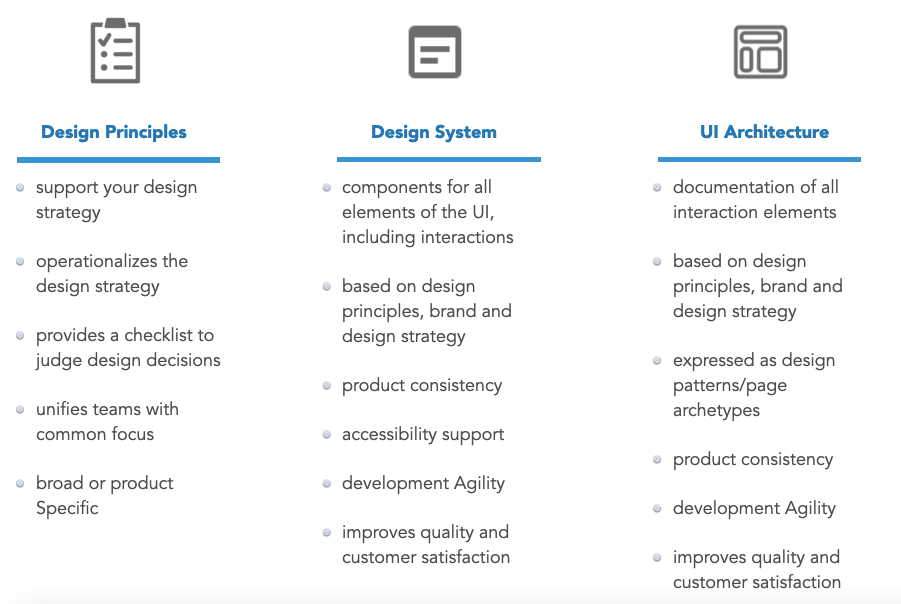Process
To support a design strategy, design process must be in place within the organization. A UX team that provides the foundational elements will influence the products but also other touchpoints such as the customer service, professional services, website/communications. UX process has an impact on the end to end experience for the customers.
Supporting a Design Strategy
A strong design strategy is supported by Foundations, Process and Artifacts.
Foundation consists of defined personas that are created through market and UX research using a variety of techniques such as contextual inquiry, diary studies, empathy and journey mapping, and task analysis.
Process consists of using lean/Agile design methods that includes continuious support of research/design iteration. Measurement and analytics are part of how the design is performing and design systems and guidelines are continually updated.
Artifacts from a UX Team include all of the research, design and innovation deliverables that are created as part of supporting the design strategy.
Benefits of a Design Process
When companies embrace design as part of their internal processes, the design process is used in all parts of the organization.
Strong Research teams deliver customer and market research that is used by all teams within the company.
UI teams create design system and content that is used to unify the end to end customer experience and create consistent and efficient UI elements and content.
Internal Process includes teams from across organizations - leading to diverse input and communication from within the company.
Innovation - by leveraging shared research and UI, and embracing cross functional inclusion in process - new ideas and identifcation of new markets can occur.
When UX is included in all apsects of a company, the culture changes - individuals are customer centric, teams are aligned and the DNA is based on value to the customers.
UX Design Elements
UX Design teams build and support a wide range of building blocks that great design is based upon.
Design principles are not only used to develop a consistent, end to end experience. They are used in every part of the organization to deliver communications, customer support, messaging that align to the vision for the buisness. All teams within an organization that align to the design principles create delightful user experiences.
Design systems - both in design tools and as code connected component libraries - are used to build consistent, accessible (WCAG compliant) and modern UX. A central library for designers and UI engineers creates efficiency in design and development.
A strong UI Architecture that is maintained across the products and the design system enables teams to enhance the libraries with newer technology, quality trusted code and better customer experiences.



